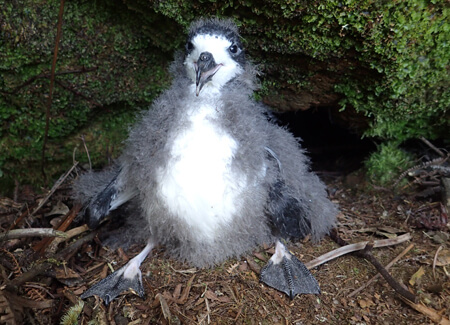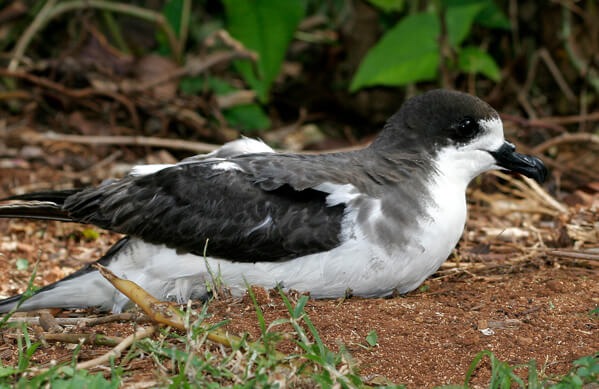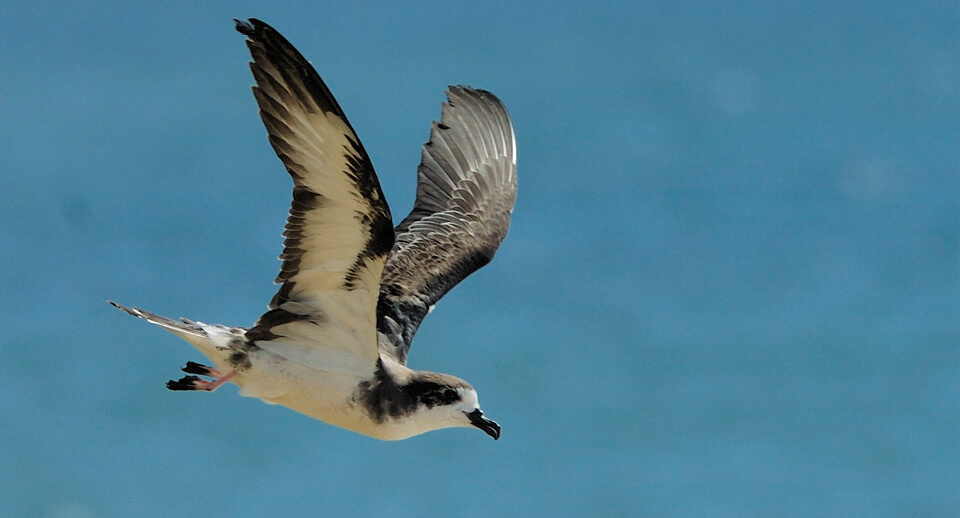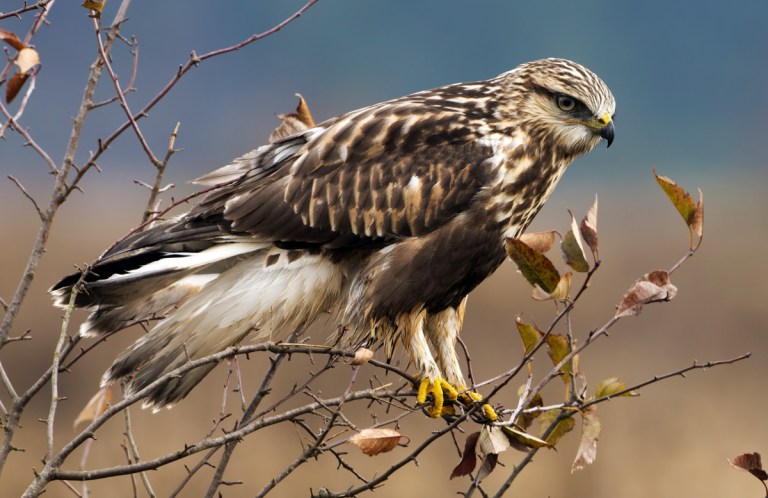
Map courtesy of “Birds of North America” https://birdsna.org, maintained by the Cornell Lab of Ornithology, Ithaca, NY
The Hawaiian Petrel is called 'Ua'u in Hawaiian for its haunting call, “oo ah oo,” heard after sunset near its nesting colonies.
The bird's striking dark and light plumage is easily seen at sea, where its white wing linings and belly flash during its typical “roller-coaster” flight. Male and female 'Ua'u share incubation and chick-feeding duties during the nearly four months the chicks spend in their burrows between hatching and fledging.
Sign up for ABC's eNews to learn how you can help protect birds

Hawaiian Petrel chick by Andre Raine, Kaua'i Endangered Seabird Recovery Project
The 'Ua'u is threatened by introduction of non-native predators such as rats and cats to its nesting islands. The birds are also attracted to artificial lights, which puts them at risk of collision with power lines, guy wires, and other man-made structures. Hawaiian Petrels may also become disoriented and blinded by lights and drop to the ground, where they are easily taken by predators or hit by vehicles.
Satellite tracking studies in 2006-2008 revealed that adult 'Ua'u fly huge, clock-wise circuits around the north Pacific Ocean during foraging trips. Breeding birds may traverse more than 6,000 miles in two weeks before returning to their burrows to feed their chicks.
ABC is collaborating with the National Fish and Wildlife Foundation, the U.S. Fish and Wildlife Service, the National Park Service, and other partners to secure predator-free breeding habitat for 'Ua'u and other seabirds on high islands in Hawai'i. A 2016 project, the first of its kind for the species, successfully translocated several birds to the new fenced location. (See a video of this remarkable conservation achievement.)
Donate to support ABC's conservation mission!




















































